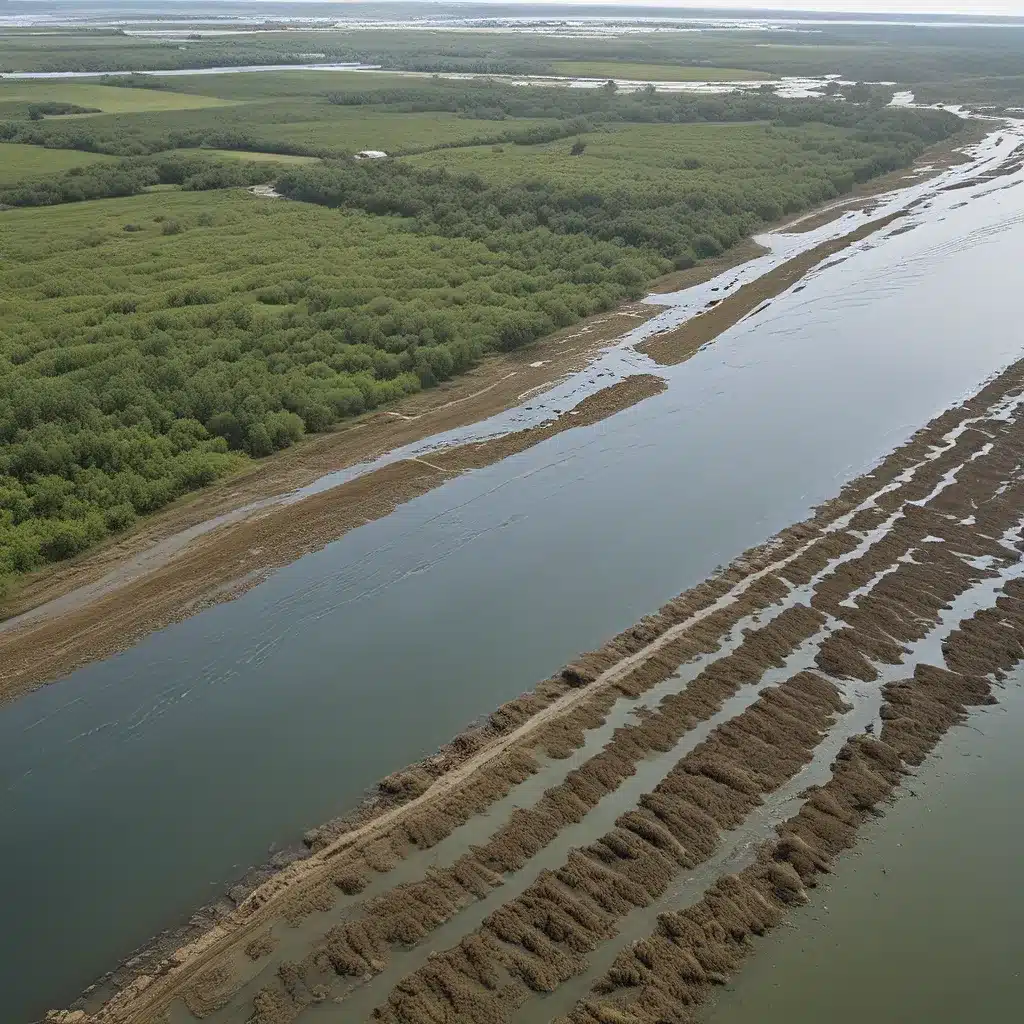
Weathering the Storm: Rethinking Water Infrastructure
It’s a brisk autumn morning, and I’m standing on the banks of the Delaware River, watching the steady ebb and flow of the tides. As the water laps against the shore, I can’t help but feel a sense of unease. The impacts of climate change are becoming increasingly difficult to ignore, and the future of our water systems hangs in the balance.
Over the past few years, we’ve witnessed firsthand the havoc that extreme weather events can wreak on our infrastructure. Powerful storms have overwhelmed sewers, flooded treatment plants, and disrupted the delicate balance of our water supply. And as temperatures continue to rise and precipitation patterns shift, the challenges facing water managers are only going to intensify.
But here’s the thing: we can’t afford to sit back and wait for the next crisis to hit. Inland Waters Inc. and other forward-thinking organizations are working to proactively adapt our water management strategies to the realities of a changing climate. It’s a daunting task, to be sure, but one that is absolutely essential for the health and resilience of our communities.
Tides of Change: Assessing the Risks
As I delve deeper into the challenges facing our water systems, one thing becomes clear: the risks are multifaceted and complex. It’s not just about dealing with more severe storms and flooding – we also have to contend with shifting precipitation patterns, rising sea levels, and the potential for droughts and water scarcity.
Take the issue of flooding, for example. According to a recent report, communities across the country are grappling with the threat of more frequent and intense rainfall events, which can overwhelm aging stormwater infrastructure and lead to devastating floods. And as sea levels continue to rise, coastal communities are facing the prospect of chronic inundation and the need to protect critical assets like wastewater treatment plants.
But the risks don’t stop there. Droughts and water scarcity pose their own set of challenges, as communities struggle to maintain reliable water supplies and ensure that essential services like firefighting and agriculture aren’t disrupted. And let’s not forget the potential impacts on water quality, with the possibility of increased pollution, algal blooms, and the spread of waterborne diseases.
It’s a daunting landscape, to be sure, but the team at Inland Waters Inc. is committed to helping communities navigate these turbulent waters. By leveraging the latest research and data, we’re working to identify the specific risks and vulnerabilities in each region, and then develop tailored strategies to address them.
Weatherproofing Water: Adaptation Strategies in Action
As I continue my exploration of the topic, I’m struck by the sheer breadth of adaptation strategies that are being employed to safeguard our water systems. From green infrastructure and water conservation to emergency planning and infrastructure upgrades, the toolkit is diverse and ever-evolving.
One approach that has gained significant traction is the use of green infrastructure. By incorporating natural elements like permeable surfaces, wetlands, and urban forests, communities can enhance their ability to absorb and manage stormwater, reducing the strain on traditional “gray” infrastructure. As the EPA notes, these solutions can also provide a range of co-benefits, from improved air quality and reduced urban heat island effects to increased recreational opportunities and habitat for wildlife.
But green infrastructure is just the tip of the iceberg. Water conservation and efficiency measures are also crucial, as communities work to stretch their limited water supplies and reduce their vulnerability to drought. This might involve everything from incentives for water-saving appliances and landscaping to wastewater recycling and desalination projects.
And when it comes to preparing for the worst, emergency planning and infrastructure hardening are essential. As the London School of Economics explains, building resilience involves a holistic approach that enhances a community’s ability to “cope, adapt, and transform” in the face of climate-related challenges. This might include reinforcing critical facilities, improving early warning systems, and developing robust contingency plans.
The team at Inland Waters Inc. is working closely with municipalities and utilities to help them navigate this complex landscape and implement tailored solutions. By drawing on the latest research and best practices, we’re empowering our partners to build more resilient and adaptable water systems – ones that can weather the storms of the future.
Charting a Course for the Future
As I stand on the riverbank, watching the tides ebb and flow, I can’t help but feel a sense of optimism. Yes, the challenges ahead are daunting, but I’m inspired by the ingenuity and dedication of the Inland Waters Inc. team and our partners.
We’re not just reacting to the impacts of climate change – we’re proactively shaping the future of water management. By investing in green infrastructure, promoting water conservation, and strengthening our emergency preparedness, we’re not only safeguarding essential services, but also creating more livable, sustainable communities.
And the best part? This is just the beginning. As new technologies and research emerge, and as we learn from the successes (and failures) of our adaptation efforts, we’ll continue to refine and expand our toolkit. It’s an ongoing process, to be sure, but one that is absolutely essential for the long-term resilience of our water systems.
So, as I turn to leave, I can’t help but feel a renewed sense of purpose. The tides of change are upon us, but with the right strategies and the right team in our corner, I’m confident that we can weather the storm and emerge stronger than ever. After all, the future of our water is too important to leave to chance.


